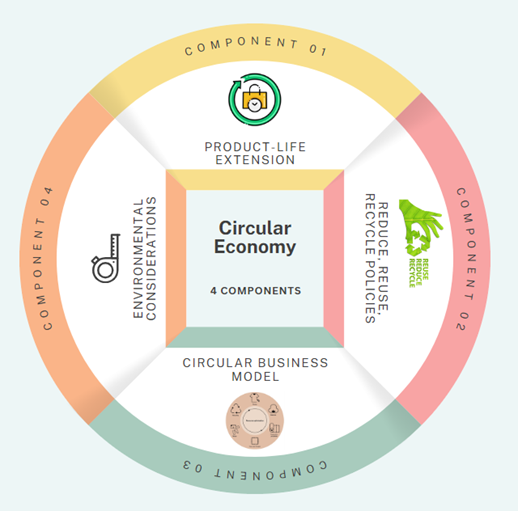A circular economy is an economic system that compels reuse and regeneration of products to make sure production is done in a sustainable and environment-friendly manner. It emphasizes waste prevention and elimination in the first place to protect human health and nature. It encourages the reusing and recycling of materials, energy, and labor to secure value and keep them circulating in the economy. A circular economy encourages businesses to avoid using non-renewable resources to regenerate ‘Mother Nature.’
This article has elaborated on the concept of circular economy and its benefits on global economies to understand the need to transition a traditional economy into a circular one.

Knowing Circular Economy
A circular economy allows the building and re-building of economic activities to ensure a sustainable and economically viable system. Circular economy conceptualizes the salience of the economy to work at every level, which includes business, organization, individual, global, and local scales. This economy is built on three principles, which include- waste and pollution elimination, products and materials circulation, and nature regeneration. It has four components that are- product-life extension, environmental considerations, circular business models, and recycling, reducing, and reusing policies.
Benefits of Circular Economy
The benefits of the circular economy can be categorized into – Economic benefits, Environmental benefits, and Opportunities for Companies and Individuals. Let us have a detailed insight into the ways the circular economy is offering benefits at every scale.
Economic Benefits
A circular economy delivers several economic benefits in terms of economic growth, cost-savings, innovation, and job creation. Through emerging circular activities and lowered production costs, revenue generation potential is increased in this economy. The inputs and outcomes of these activities spread across sectors to ensure overall economic growth. Utilization of advanced manufacturing facilities contributes to material cost savings. Replacing linear systems and products with circular ones opens the door to innovative and creative ideas. It corroborates labor-intensive recycling activities and high-skilled job openings in the manufacturing sector to increase employment potential.
Environmental Benefits
The circular economy also ensures environmental benefits by reducing greenhouse gas emissions, responsible consumption of resources, and enhancing soil health and land productivity. USA industries emit 23% of the total greenhouse gas emissions of the country, indicating a need for increased circular activities. Environmentally, circular economies like the USA focus on reducing carbon footprints to create sustainable manufacturing businesses. A circular economy reduces the consumption of primary resources such as real-estate land, non-renewable energy, and others. Returning biological materials to soils can effectively enhance soil health and productivity of lands.
Opportunities for All
Room for Company Maneuvering
A circular economy guides companies towards profitability, a desired goal for every business. In a circular economy, manufacturing costs are reduced to create opportunities for new sources of profit. Market volatility poses a challenge for every business, and to navigate through the fluctuations in market demand and competition, recycled inputs are used to save money on raw material purchases. Decentralized suppliers source alternative materials to ensure supply chain stability during times of crisis. This economic system leads to increased demands for business services and strengthened customer relationships.
Benefits Savored by Individuals
The benefits of a circular economy are not limited to businesses only. It opens the door to opportunities for individuals as well. One of the biggest advantages is an increase in disposable income. Reduced product and service costs help individuals save more. Improved and customized products and services increase customer utility. On the other hand, transcending to a circular food system would reduce health issues and healthcare costs to a large extent. Reduced environmental impacts from industries would also enhance the health of populations.
Poorly designed linear systems are widely being used by businesses despite the consequences they bring. The transition from a linear to a circular system requires advanced integration of systemic solutions encompassing environmental factors, pay systems, and others. Businesses focusing on introducing a circular business model are likely to get enriched not only with profitability but also with greater value.










